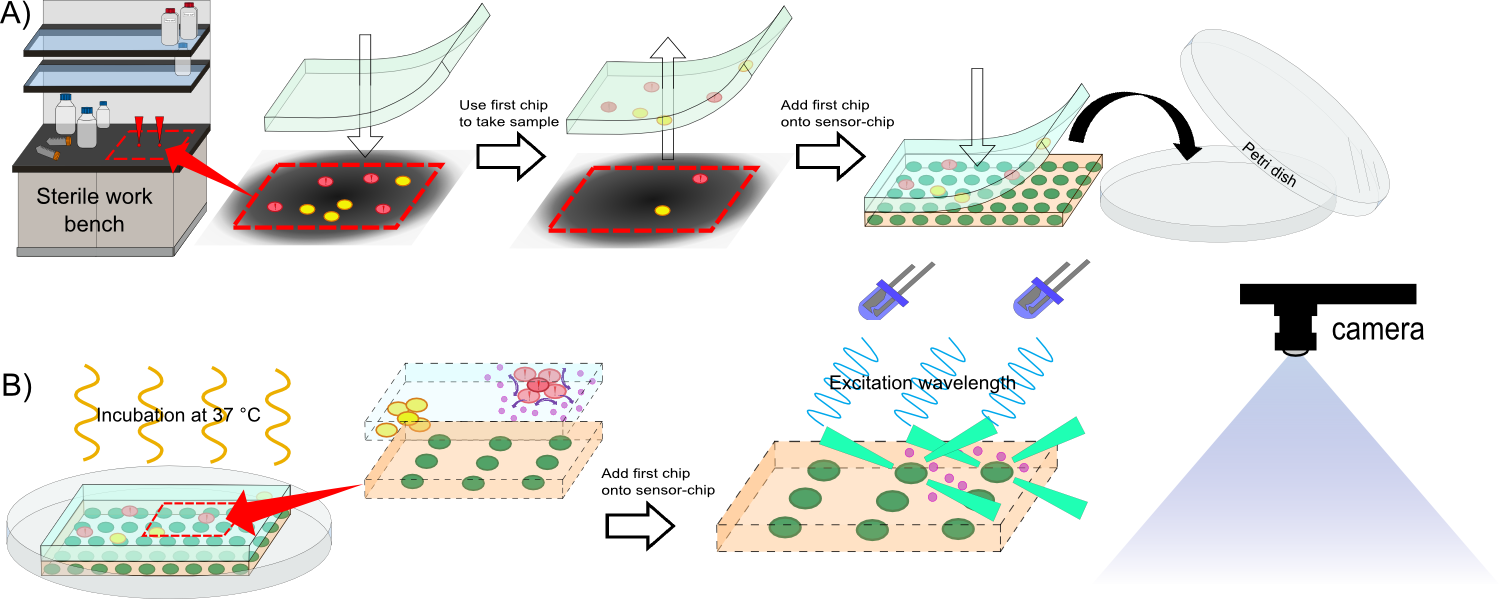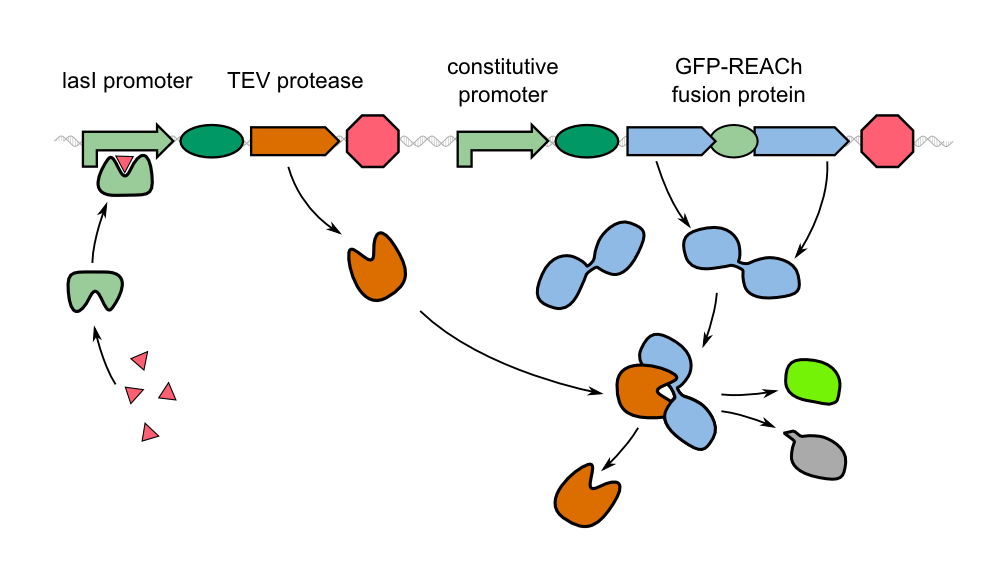Team:Aachen/Project/2D Biosensor
From 2014.igem.org
Aschechtel (Talk | contribs) (→Achievements) |
Aschechtel (Talk | contribs) (→Achievements) |
||
| Line 50: | Line 50: | ||
=== Choose the medium === | === Choose the medium === | ||
At the beginning we had no own device and had to work with the equipment of the lab: a Molecular Imager® Gel Doc<sup>TM</sup> XR+ from BIO-RAD. The Gel Doc<sup>TM</sup> uses uv light and has only two filter. Because of this it was not ideal for our project. | At the beginning we had no own device and had to work with the equipment of the lab: a Molecular Imager® Gel Doc<sup>TM</sup> XR+ from BIO-RAD. The Gel Doc<sup>TM</sup> uses uv light and has only two filter. Because of this it was not ideal for our project. | ||
| - | LB medium has under uv light a hight fluorescence. The background fluorescence was to | + | LB medium has under uv light a hight fluorescence. The background fluorescence was to high to see a signal of our cells so we used minimal media (NA, M9, Hartman) to minimize the background. This worked fine for the first tries but the cells don't grow well in the minimal media. |
| - | There was the idea to store the chips at -20 °C, ready for use. But the | + | There was the idea to store the chips at -20 °C, ready for use. But the cells died. Adding 5-10% glycerol resulted in a expression stop of fluorescence proteins. So the idea was rejected. |
In our own device WatsOn with the optmized light (450/ 480 nm) the LB showed no flourescence. The cells grow better there and so we use this now. | In our own device WatsOn with the optmized light (450/ 480 nm) the LB showed no flourescence. The cells grow better there and so we use this now. | ||
For longer storage up to 5 days in the fridge (+ 4°C) TB medium can be used. It has a smal background flourescence in WatsOn. | For longer storage up to 5 days in the fridge (+ 4°C) TB medium can be used. It has a smal background flourescence in WatsOn. | ||
=== Choose the agar concentration === | === Choose the agar concentration === | ||
| - | + | For the sensor chip an agarose concentration of 1.5% is used. | |
| + | We first tryed agar. When the agar conzentration is lower than 1.5% the chip is not stable and brakes fast. When the agar conzentration is higher than 1.5% the medium gets solid befor pooring it into chip form. | ||
| + | In the end we choose agarose instead of agar because the agarose is better linked and so the difusion is not so high. | ||
--> | --> | ||
{{Team:Aachen/Footer}} | {{Team:Aachen/Footer}} | ||
Revision as of 09:51, 14 October 2014
|
|
|
|
 "
"

